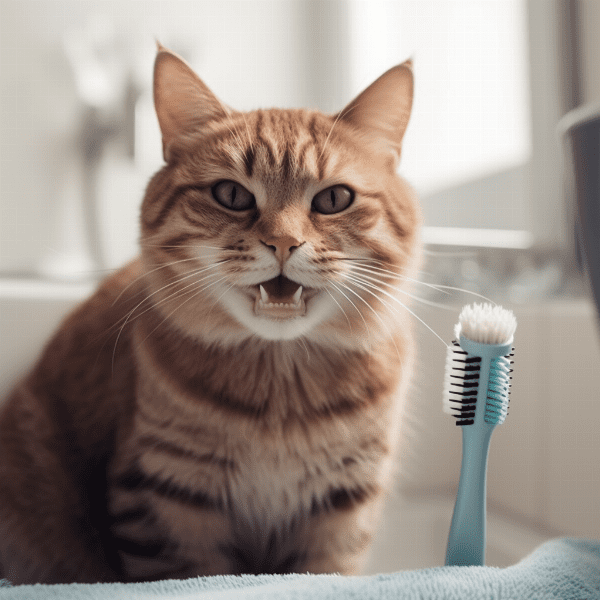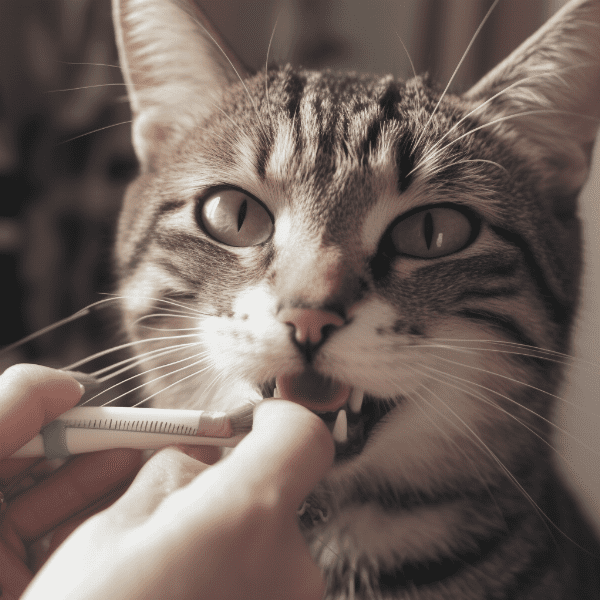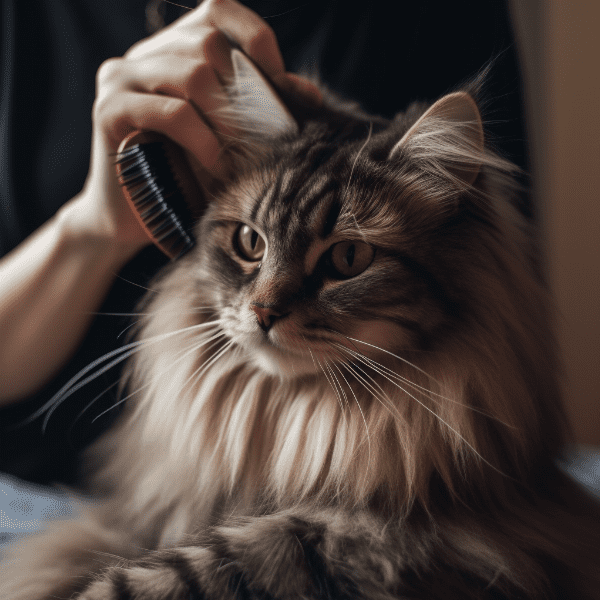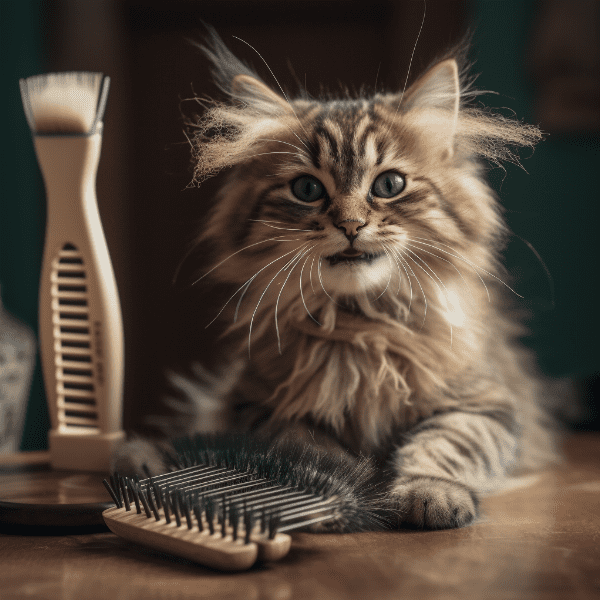Table of Contents
- Why Brushing Your Cat’s Teeth Is Important
- Preparing for the Brushing Process
- Choosing the Right Toothbrush and Toothpaste for Your Cat
- Step-by-Step Guide to Brushing Your Cat’s Teeth
- Dealing with Potential Challenges during Brushing
- How Often Should You Brush Your Cat’s Teeth?
- Alternatives to Brushing Your Cat’s Teeth
- Signs of Dental Problems in Cats
- Tips for Maintaining Your Cat’s Dental Health
- Final Thoughts on Brushing Your Cat’s Teeth
Why Brushing Your Cat’s Teeth Is Important
As a responsible pet owner, it is essential to ensure that your cat is healthy and happy. One of the most overlooked aspects of a cat’s health is their dental hygiene. While cats do groom themselves, they cannot maintain their dental health without some assistance. Brushing your cat’s teeth can prevent dental issues, improve their overall health, and save you money in the long run.
Prevents Dental Problems
Just like humans, cats are also prone to dental problems such as plaque buildup, gum disease, and tooth decay. Regular brushing can help prevent these issues by removing plaque and food particles that accumulate on the teeth and gums. If left unattended, these substances can turn into tartar, a hardened form of plaque that cannot be removed with brushing alone, and can cause more severe dental issues.
Improves Overall Health
Poor dental hygiene in cats can lead to several health problems such as bacterial infections, heart disease, and kidney problems. By regularly brushing your cat’s teeth, you can prevent these issues and improve their overall health. Proper dental hygiene can also prevent bad breath, which can be a sign of dental issues or other underlying health problems.
Saves Money in the Long Run
Regular dental check-ups and treatments can be costly, and prevention is always better than cure. By brushing your cat’s teeth regularly, you can prevent expensive dental procedures down the line. Additionally, dental issues left untreated can lead to more severe health problems, which can result in more significant medical bills.
In conclusion, brushing your cat’s teeth is crucial for their overall health and well-being. It may take some time to get your cat used to the process, but it is a worthwhile investment in their health. By preventing dental problems, improving their overall health, and saving money in the long run, you are ensuring that your cat lives a happy and healthy life.
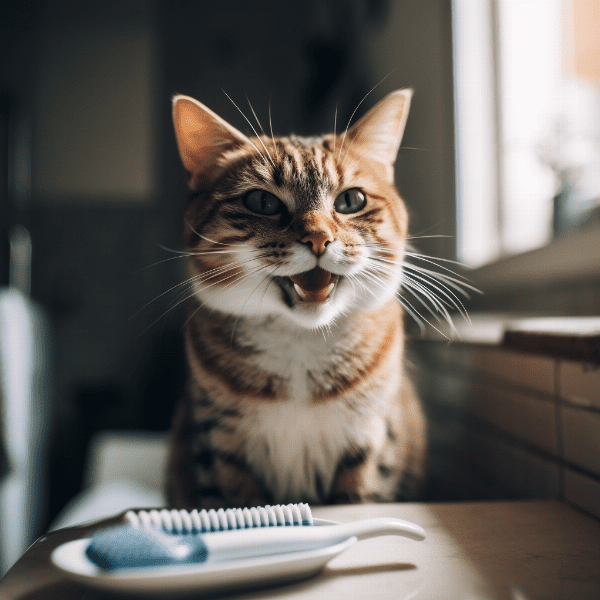
Preparing for the Brushing Process
Before you start brushing your cat’s teeth, there are a few things you need to do to prepare for the process. Here are some steps to follow to make the experience as smooth and stress-free as possible:
Familiarize Your Cat with the Toothbrush
Cats are naturally curious animals, so let them explore the toothbrush before you begin brushing. Allow your cat to sniff and investigate the toothbrush, so they become familiar with the object. This will help to reduce any anxiety or fear that your cat may have towards the toothbrush.
Choose the Right Time
Choose a time when your cat is relaxed and calm. Avoid brushing your cat’s teeth after a meal or when they are feeling hyperactive. It’s best to choose a quiet and peaceful time of day when your cat is most likely to be relaxed and happy.
Get Your Supplies Ready
Before you start brushing, make sure you have all the necessary supplies ready. This includes a cat-friendly toothbrush, toothpaste, and a bowl of water to rinse the toothbrush. It’s essential to choose a toothbrush and toothpaste specifically designed for cats. Never use human toothpaste on your cat as it contains ingredients that can be harmful to them.
Use Positive Reinforcement
By following these steps, you can ensure that the brushing process is as stress-free as possible for both you and your cat. Familiarizing your cat with the toothbrush, choosing the right time, getting your supplies ready, and using positive reinforcement can make a significant difference in the success of the brushing process.

Choosing the Right Toothbrush and Toothpaste for Your Cat
Choosing the right toothbrush and toothpaste for your cat is crucial for successful teeth cleaning. Here are some things to consider when choosing the right supplies:
Toothbrush
When selecting a toothbrush for your cat, choose one that is specifically designed for feline dental hygiene. These brushes typically have soft bristles and a small head that can fit comfortably in a cat’s mouth. Avoid using a human toothbrush, as the bristles may be too hard and can damage your cat’s teeth and gums.
Toothpaste
It’s important to use toothpaste specifically designed for cats, as human toothpaste can be toxic to them. Cat toothpaste comes in various flavors such as chicken, beef, and fish, making it more appealing to cats. Additionally, cat toothpaste is safe to swallow, which is important since cats cannot spit like humans.
Consider Your Cat’s Preferences
Some cats may be picky when it comes to toothbrushes and toothpaste. Consider your cat’s preferences when selecting these items. For example, if your cat is a picky eater, consider choosing a toothpaste with a flavor they enjoy to make the brushing process more enjoyable for them.
Talk to Your Veterinarian
If you’re unsure about which toothbrush and toothpaste to choose for your cat, talk to your veterinarian. They can recommend specific brands and provide advice on how to brush your cat’s teeth properly.
Choosing the right toothbrush and toothpaste for your cat is an essential step in ensuring successful teeth cleaning. Consider your cat’s preferences, choose a toothbrush specifically designed for feline dental hygiene, use toothpaste designed for cats, and seek advice from your veterinarian if necessary. By selecting the right supplies, you can make the teeth cleaning process more comfortable and enjoyable for your cat.
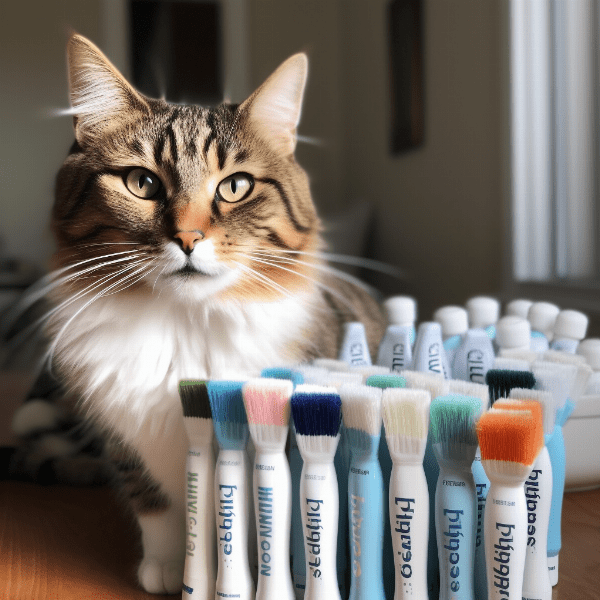
Step-by-Step Guide to Brushing Your Cat’s Teeth
Brushing your cat’s teeth may seem like a daunting task, but with patience and practice, it can become a routine part of your cat’s grooming regimen. Here is a step-by-step guide to help you brush your cat’s teeth:
Step 1: Get Your Cat Comfortable
Before you begin brushing, make sure your cat is relaxed and comfortable. You can hold your cat in your lap or place them on a stable surface such as a table or countertop. Make sure they are in a secure position, so they don’t fall or jump off.
Step 2: Apply Toothpaste
Apply a small amount of toothpaste to the toothbrush. Allow your cat to sniff and taste the toothpaste to make sure they like the flavor. If they do not like the taste, try a different flavor of toothpaste.
Step 3: Begin Brushing
Hold your cat’s head steady with one hand and use the other hand to brush their teeth. Start with the outer surfaces of the teeth and brush in a circular motion. Use a gentle, back-and-forth motion on the chewing surfaces of the teeth. Be sure to reach the back teeth, where most dental issues occur.
Step 4: Reward Your Cat
Reward your cat with a treat or praise after brushing. This will create a positive association with the process and make them more willing to cooperate in the future.
Step 5: Gradually Increase the Time
Start with short brushing sessions, gradually increasing the time as your cat becomes more comfortable. Aim for at least 30 seconds of brushing on each side of your cat’s mouth.
Step 6: Make it a Routine
Make teeth cleaning a regular part of your cat’s grooming routine. Aim to brush your cat’s teeth at least two to three times a week to maintain their dental health.
By following these steps, you can make brushing your cat’s teeth a manageable and routine task. Get your cat comfortable, apply toothpaste, begin brushing, reward your cat, gradually increase the time, and make it a routine part of your cat’s grooming regimen. Remember to be patient and persistent, and don’t forget to reward your cat for their cooperation!

Dealing with Potential Challenges during Brushing
Brushing your cat’s teeth can be a challenging task, especially if your cat is not used to the process. Here are some potential challenges you may face and how to deal with them:
Challenge 1: Your Cat Resists the Brush
If your cat resists the toothbrush, try to make the experience more enjoyable for them. You can try using a toothbrush with a softer bristle, or a toothpaste with a more appealing flavor. Additionally, you can try using a finger brush, which can be more comfortable for your cat.
Challenge 2: Your Cat Becomes Aggressive
If your cat becomes aggressive during the brushing process, stop immediately. You can try again later when your cat is calmer. Never force your cat to endure the process, as it can lead to fear and anxiety.
Challenge 3: Your Cat Swallows the Toothpaste
If your cat swallows the toothpaste, don’t worry. Cat toothpaste is safe to swallow, and the small amount ingested will not harm them. However, try to prevent your cat from drinking or eating for at least 30 minutes after brushing to allow the toothpaste to work effectively.
Challenge 4: Your Cat Refuses to Open Their Mouth
If your cat refuses to open their mouth, you can try gently massaging their cheeks to encourage them to open their mouth. You can also try using a toothbrush or finger brush with a smaller head to make it easier to access the teeth.
Challenge 5: Your Cat Becomes Anxious or Stressed
If your cat becomes anxious or stressed during the brushing process, take a break and try again later. You can also try using calming techniques such as playing soothing music or providing a relaxing environment.
By understanding these potential challenges and how to deal with them, you can make the teeth cleaning process more comfortable for both you and your cat. If your cat continues to resist the process, consult with your veterinarian for further advice.
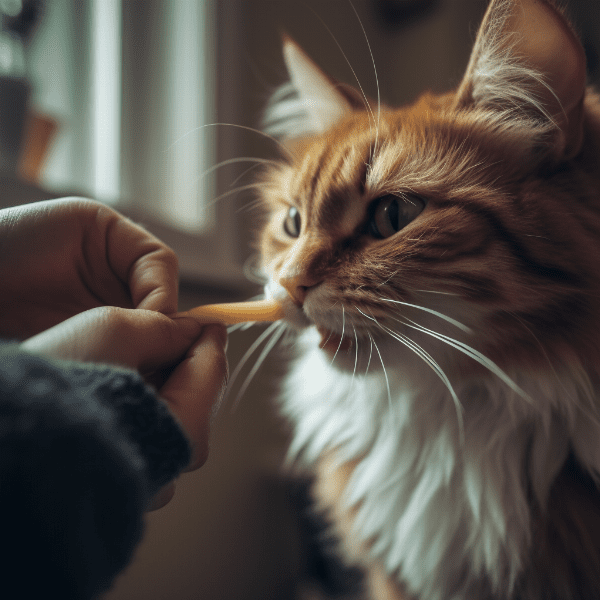
How Often Should You Brush Your Cat’s Teeth?
Brushing your cat’s teeth regularly is essential for maintaining their dental health. Here are some factors to consider when determining how often to brush your cat’s teeth:
Age
Young cats may not require as much dental care as older cats. As cats age, they become more susceptible to dental issues, making regular teeth cleaning more crucial. If you have an older cat, you may need to brush their teeth more frequently.
Diet
Your cat’s diet can also impact their dental health. Cats that consume dry food may require more teeth cleaning than cats that eat wet food. Dry food can leave more debris on the teeth and gums, making it more challenging to maintain good dental hygiene.
Dental Health
If your cat has a history of dental problems, you may need to brush their teeth more frequently. Regular brushing can prevent future dental issues and keep their teeth and gums healthy.
Veterinary Recommendations
In general, it’s best to aim for brushing your cat’s teeth at least two to three times a week. This frequency can help prevent dental problems and maintain good dental hygiene. However, if your cat has a history of dental issues, your veterinarian may recommend more frequent brushing.
By considering your cat’s age, diet, dental health, and veterinarian recommendations, you can determine how often to brush your cat’s teeth to ensure their overall dental health.
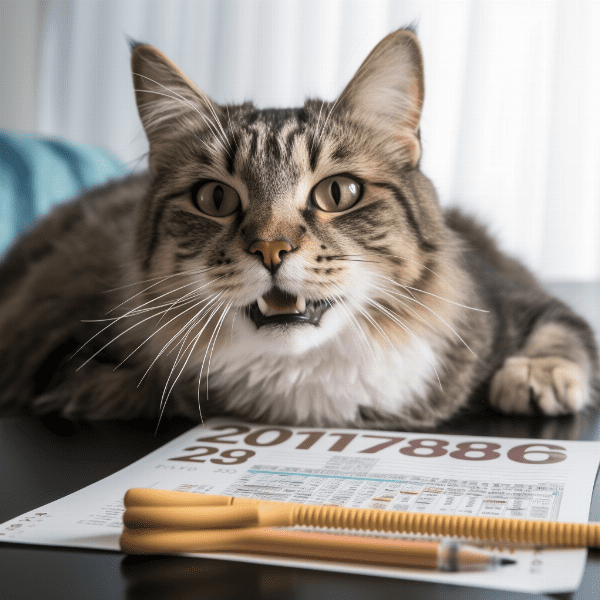
Alternatives to Brushing Your Cat’s Teeth
While brushing your cat’s teeth is the most effective way to maintain their dental health, some alternatives can help if your cat resists brushing. Here are some alternatives to consider:
Dental Treats
Dental treats are designed to help clean your cat’s teeth while also providing them with a tasty treat. These treats typically have a texture that can help remove plaque and tartar from your cat’s teeth. However, it’s important to choose treats that are specifically designed for feline dental health.
Dental Toys
Chew toys and dental toys can also help remove plaque and tartar from your cat’s teeth. These toys can encourage your cat to chew, which can help clean their teeth and promote good dental hygiene.
Water Additives
Water additives can also help promote good dental hygiene in cats. These additives are added to your cat’s drinking water and can help prevent plaque and tartar buildup. However, it’s important to choose water additives that are specifically designed for feline dental health.
Professional Dental Cleaning
If your cat has severe dental issues, a professional dental cleaning may be necessary. This procedure involves a deep cleaning of your cat’s teeth and gums under anesthesia. While it can be costly, it can help prevent future dental issues and promote good dental health.
While these alternatives can help maintain your cat’s dental health, they are not a substitute for regular brushing. If possible, try to incorporate brushing into your cat’s routine, even if it’s only a few times a week. By combining these alternatives with regular brushing, you can ensure your cat’s overall dental health.

Signs of Dental Problems in Cats
It’s essential to monitor your cat’s dental health regularly to prevent and detect any dental problems early. Here are some signs of dental problems in cats to look out for:
Bad Breath
Bad breath is often the first sign of dental problems in cats. If your cat’s breath smells foul, it could indicate the presence of plaque, tartar, or gum disease.
Difficulty Eating
If your cat has difficulty eating, it could be a sign of dental problems. Dental issues can cause pain and discomfort when chewing, making it challenging for your cat to eat.
Drooling
Excessive drooling can indicate dental problems such as tooth decay, gum disease, or an oral infection. If your cat is drooling more than usual, it’s essential to have their dental health checked.
Discolored Teeth
Discolored teeth can indicate dental problems such as decay, tartar buildup, or gum disease. If you notice any discoloration on your cat’s teeth, it’s essential to have their dental health evaluated.
Behavioral Changes
If your cat has sudden changes in behavior such as aggression, hiding, or lethargy, it could be a sign of dental problems. Dental issues can cause pain and discomfort, leading to changes in behavior.
Swelling or Bleeding Gums
Swelling or bleeding gums can indicate gum disease, which can cause tooth loss and other dental issues. If you notice any swelling or bleeding in your cat’s gums, it’s essential to have their dental health evaluated.
By monitoring your cat’s dental health regularly and looking out for these signs, you can detect any dental problems early and seek treatment promptly. If you notice any of these signs, consult with your veterinarian for further advice.
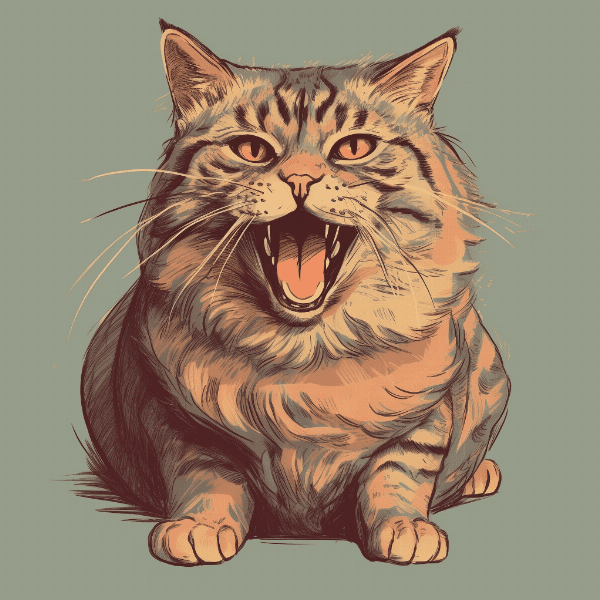
Tips for Maintaining Your Cat’s Dental Health
Maintaining your cat’s dental health is crucial for their overall wellbeing. Here are some tips to help you keep your cat’s teeth and gums healthy:
Regular Teeth Cleaning
Regular teeth cleaning is the most effective way to maintain your cat’s dental health. Aim to brush your cat’s teeth at least two to three times a week, using a toothbrush and toothpaste specifically designed for cats.
Provide Dental Chews and Toys
Dental chews and toys can help remove plaque and tartar from your cat’s teeth while also providing them with a fun activity. Choose chews and toys specifically designed for feline dental health.
Feed a Healthy Diet
A healthy diet can also promote good dental health in cats. Choose high-quality food that is formulated to support dental health, such as food with a crunchy texture that can help remove debris from the teeth and gums.
Regular Vet Checkups
Regular veterinary checkups are crucial for monitoring your cat’s dental health. Your veterinarian can evaluate your cat’s teeth and gums, identify any dental problems, and recommend appropriate treatment.
Monitor for Signs of Dental Problems
By incorporating these tips into your cat’s daily routine, you can promote good dental health and prevent dental problems. Regular teeth cleaning, providing dental chews and toys, feeding a healthy diet, regular veterinary checkups, and monitoring for signs of dental problems can help keep your cat’s teeth and gums healthy for years to come.
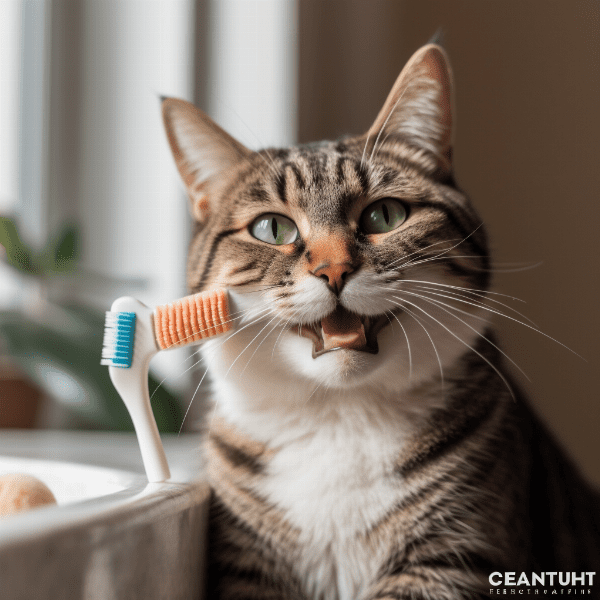
Final Thoughts on Brushing Your Cat’s Teeth
Brushing your cat’s teeth is an essential part of maintaining their dental health. While it may seem challenging at first, with patience and persistence, you can make it a routine part of your cat’s grooming regimen. Here are some final thoughts to keep in mind:
It’s Never Too Late to Start
It’s never too late to start brushing your cat’s teeth. Even if your cat is older or has never had their teeth brushed before, you can still introduce the process and make it a routine part of their grooming regimen.
Be Patient and Persistent
Brushing your cat’s teeth can take time and patience, especially if your cat is not used to the process. Be patient, start slowly, and gradually increase the time and frequency of brushing sessions.
Incorporate Dental Chews and Toys
Incorporating dental chews and toys can help maintain your cat’s dental health and make teeth cleaning more enjoyable for them. Choose chews and toys that are specifically designed for feline dental health.
Consult with Your Veterinarian
Consult with your veterinarian for their recommendations on maintaining your cat’s dental health. They can evaluate your cat’s dental health and recommend appropriate treatment, such as a professional dental cleaning or dietary changes.
Monitor Your Cat’s Dental Health Regularly
Monitor your cat’s dental health regularly and look out for signs of dental problems such as bad breath, difficulty eating, or discolored teeth. Early detection of dental issues can prevent more severe dental problems from developing.
By following these tips and making teeth cleaning a routine part of your cat’s grooming regimen, you can help maintain their dental health and promote their overall wellbeing. Remember to be patient, persistent, and consult with your veterinarian for their recommendations on maintaining your cat’s dental health.
